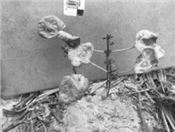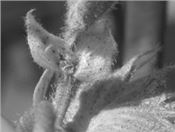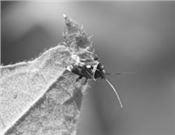|
Cotton Insect Update … Thrips Be Rolling
DR. SCOTT STEWART
JACKSON, TENN.
It’s been a challenge getting our crops in the ground, and our planting dates are really stretched out. It is especially important that our late planted cotton gets off to a good start to make up for a little lost time. Unfortunately, the ‘Thrips Infestation Predictor for Cotton’ (https://climate.ncsu.edu/cottonTIP) appears to be dead on in predicting our heaviest thrips pressure will occur in early June, just as our later planted cotton is most susceptible. I’d suggest making an insecticide application to all of our cotton, except the few acres that might have been planted using AgLogic (aldicarb). It is very important to make applications early, before the second true leaf, to get much benefit. Here’s the rub! My data strongly suggest we have developed some resistance to Orthene/Acephate and other OP insecticides like Bidrin or Dimethoate. It’s a tough pill to swallow considering the less than exciting commodity prices, but Intrepid Edge at 3 oz an acre is better. In my opinion, it’s worth the extra money. Acephate and the other OP insecticides may still provide some relief, but I’d rather start with a product that gives me more confidence. Because I’ve been asked, upping the Acephate rate won’t help much. Overcoming resistance with higher rates has never really worked well … just think of pyrethroids and tobacco budworm or glyphosate and Palmer pigweed.
It’s also time to think about plant bug control as our earliest planted cotton starts squaring. First, pay extra attention to the first fields that start squaring. Tarnished plant bugs often congregate in those fields first and worst until they get more options. Second, follow good IPM practices. This means sampling, using our well-tested treatment thresholds, and picking the right insecticides. Much of this information is available at online at our mobile-friendly pest guide, https://guide.utcrops.com/cotton/cotton-insect-guide/.
The best tip I can give you is to monitor square retention. This means sampling. People almost always overestimate square loss when they base their opinion on the impression rather than actual sampling data. The goal is to maintain at least 80% square retention until early bloom. Square retention won’t lie. If you are missing plant bugs in your sample, it will tell on you. If your insecticide application are not working, it will drop. We often see plant bug numbers remain steady after applications, but if square retention also remains steady, that indicates your applications are helping. During early squaring, you typically can get by with products like imidacloprid at full-labeled rates, Centric at 1.75-2 oz per acre, or even a mixture of the two where the Centric rate is cut back to 1-1.25 oz. However, as we progress further into squaring, other products will be needed. Pay attention to the UT Crops News at https://news.utcrops.com/ for more on that in the future. ∆
DR. SCOTT STEWART: IPM Extension Specialist, University of Tennessee

A. Severe thrips injury on untreated cotton

B. Abscission scar where square was lost

C. Adult tarnished plant bug
|
|